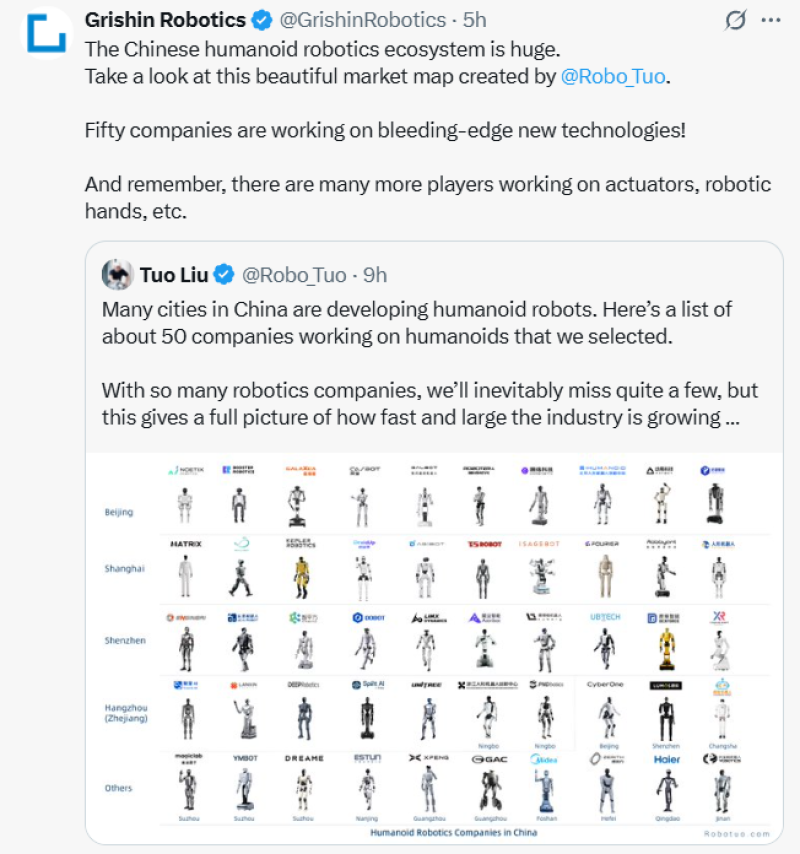⬤ China's humanoid robotics scene just got real. Shenzhen Everwin Precision dropped fresh numbers showing the sector's taking off fast. Two overseas clients alone brought in RMB 35 million (around $5 million) in the first half of the year—proof that global buyers are betting big on China's manufacturing muscle. The company shared this alongside a market map tracking roughly 50 humanoid robot developers across Beijing, Shanghai, Shenzhen, and Hangzhou, painting a picture of an industry that's already massive and growing.

⬤ By August, Everwin's deliveries of humanoid parts crossed RMB 80 million ($11 million). They're working with more than 30 domestic robotics companies, supplying everything from actuators and robotic hands to frames and specialized components. The ecosystem's expanding like crazy—hundreds, maybe thousands of suppliers are jumping in with motion systems, sensors, artificial muscles, structural materials, and electronics. We're watching Chinese robotics firms shift from building prototypes to actually shipping products, backed by a supply chain that's maturing fast.
⬤ Industry insiders are calling China's humanoid robotics ecosystem "beyond imagination." Companies that used to focus on industrial automation are now pivoting to humanoid-specific hardware, which means faster prototypes, bigger production runs, and falling costs. Everwin's growing client list shows that tons of Chinese robotics players are hitting early-stage commercial production, driven by strong local demand and export deals.

⬤ The numbers tell the story: humanoid robotics is becoming a major growth sector in China. As production scales up and more companies pile in, success comes down to ecosystem depth, supply chain speed, and how fast you can crank out specialized hardware. Everwin's update signals a market in full transformation—humanoid tech is moving from labs to factory floors.
 Sergey Diakov
Sergey Diakov

 Sergey Diakov
Sergey Diakov


